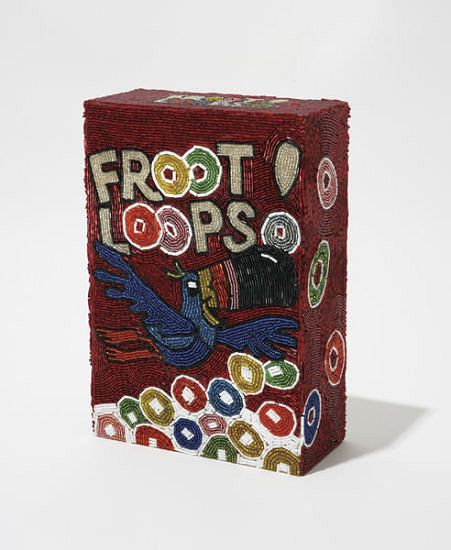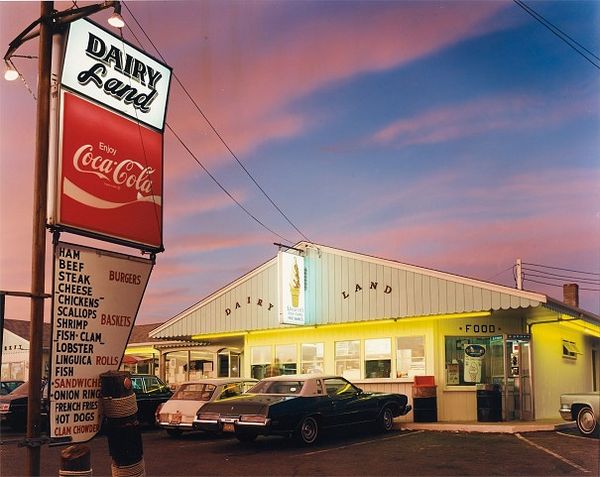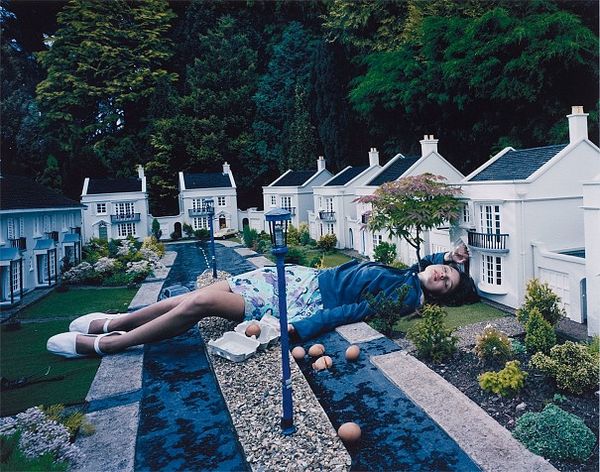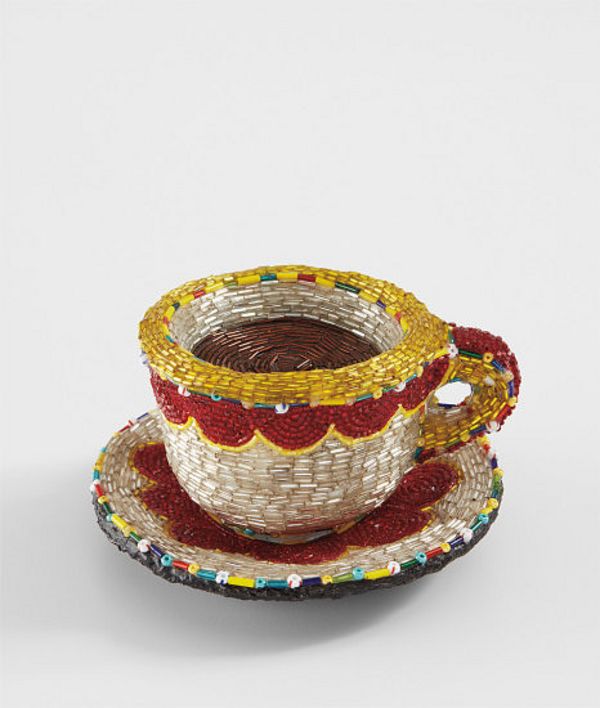Liza Lou, Cup and Saucer, 1991-1996. Sold for $11,250. New Now New York.
Historic moments always seep into artistic oeuvres, and as the last few months have changed the way we all work (and live), many artists have had to develop their own work-from-home practice. The pandemic has affected how portraitists meet subjects, the scale and purpose of artwork, and fundamentally challenged our understanding of concepts like home, isolation, and touch. From Amy Sherald, who has revisited gouache, to Joel Meyerowitz, who has turned to himself as a subject, these are five artists whose practices are now infused with the recent past.
1. Amy Sherald

Amy Sherald, The Bathers, 2015. Sold for $4,265,000. 20th Century & Contemporary Art New York.
Inspired by early photography by African American artists, Amy Sherald reflects on the contemporary African American experience in her powerful portraits. During the pandemic, she left New York and sheltered in place in Atlanta, where she shifted from working on her large-scale portraits to works at a more intimate scale. Her recent exhibition, “Womanist is to Feminist as Purple is to Lavender” at Hauser & Wirth showcased a series made in gouache on paper, a medium that she had not worked in since childhood. Sherald has said, “I always want the work to be a resting place, one where you can let your guard down among figures you understand.”
2. Liza Lou

Liza Lou, Fruit Loops, 1996. Sold for $36,000. New York.
Liza Lou responded to the first weeks of lockdown with a community-oriented project, apartogether. The artist, who is known for her intricately beaded, large-scale installations that explore labor, craft, and femininity, encouraged her community to make comfort blankets, after rediscovering her own baby blanket. The project was intended to seek solace in the physicality of artmaking when physicality had come to mean something quite different. As she wrote in her Instagram invitation, “Even while we’re apart, let’s make art together…It’s a starting point, a prompt, using the limitations and challenges we are dealing with globally.”
3. Joel Meyerowitz

Joel Meyerowitz, Dairyland, Provincetown, 1976. Sold for $16,250. Photographs New York.
Early in the pandemic, Meyerowitz told The New York Times, “On New Year’s Day, I thought, ‘What could I do this year that would be a challenge?’ I’d never really done self-portraits, so I decided to take one a day, every day, for a year.” The project, which began before lockdown, transformed as his “cast” became limited to himself and his wife. Even though he is exploring the lifecycle and themes of mortality during this process, he says, “It’s actually very optimistic. I’ve always felt that photography is a positive art form. Every time I press a button on the camera, I’m saying yes to something I saw, something that woke me up.”
4. Julia Fullerton-Batten

Julia Fullerton-Batten, Broken Eggs, 2005. Sold for £3,750. Under the Influence London.
Fullerton-Batten won the International Photography Award for Fine Art Photography of the Year with her series, “Looking Out from Within,” 2020, which focuses on the life-altering ramifications of the pandemic. “Looking Out from Within,” emerged from the need to do something, and in its final form is a haunting reflection of emotional, physical, and future limitation. “I felt numb,” explained Fullerton-Batten. “Couldn’t stand around helpless. I decided to document the new daily existence of millions.”
5. María Berrío
It soon opened outwards into my own response to a very real, global catastrophe.
As she was producing work for an exhibition at Victoria Miro, Berrío had to rethink her typically monumental works, as her son’s bedroom became her studio. And, as she told Artsy, the pandemic affected her work in more than its scale. “This exhibition began with the idea of a fictional town attempting to overcome a catastrophe, but it soon opened outwards into my own response to a very real, global catastrophe.” The resulting work is full of brilliant, collaged color that blends fiction and impressions, examining the parallels between womanhood and the natural world.

Recommended Reading
How Cindy Sherman Reinvented the Selfie >
David Hockney’s Intimate, Floral Still-Lifes >
